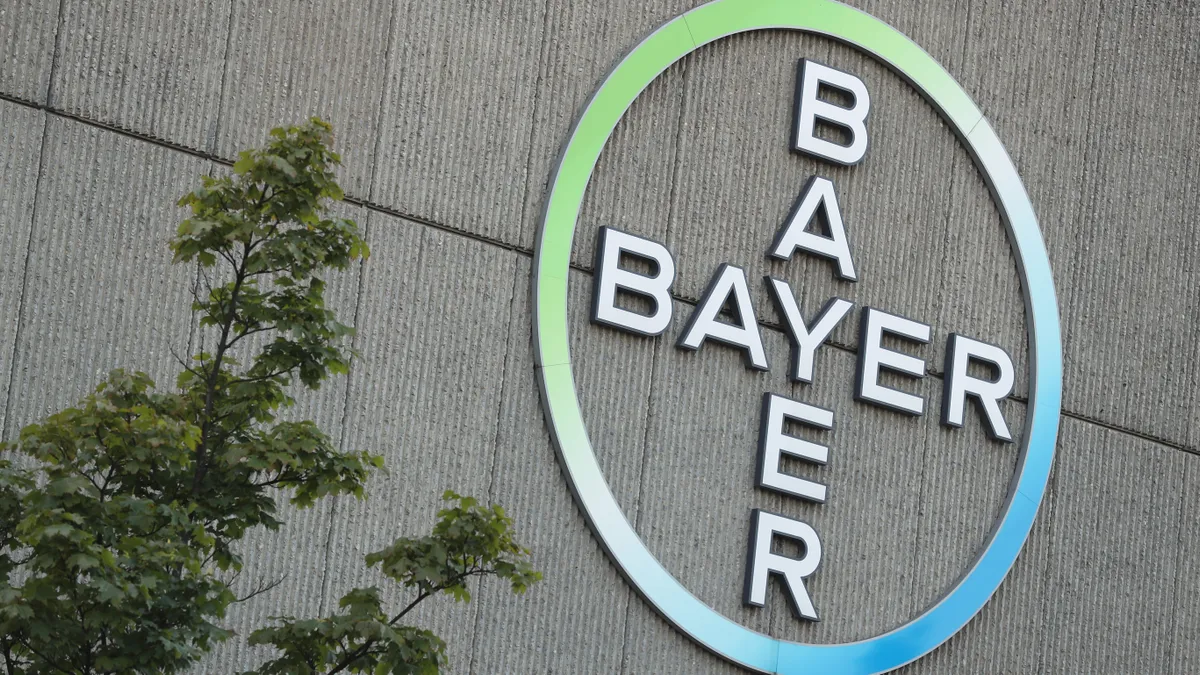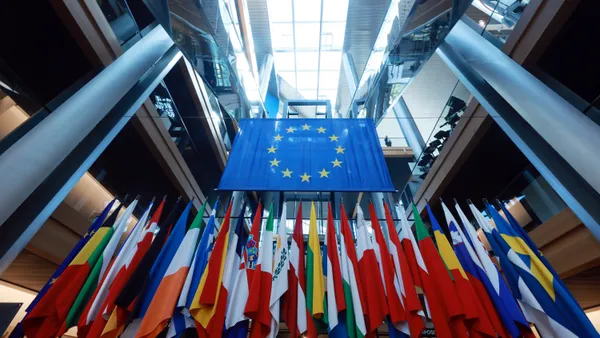Dive Brief:
- The Securities and Exchange Commission might have stopped short of requiring data on scope 3 emissions in its now-stayed climate disclosure rule, but companies should nonetheless get ready to report these emissions in anticipation of future obligations, ESG experts said during a panel discussion Thursday.
- “This universe of scope 3 accounting and scope 3 calculations is going only in one direction, and you can either go there in advance, or you can be dragged,” said Kevin Eckerle, director of ESG performance, operations and consumer health at pharmaceutical and biotech company Bayer. “The more you drag, the more expensive it gets.”
- A lot of companies are proactively reporting on scope 3 voluntarily due to pressure from investors, customers and clients, said Jason Noel, regional sales director for ESG data platform Lythouse, a subsidiary of procurement software provider Zycus. “The business value with preparing for scope 3 is not having to scramble at the last minute if you get hit with an audit or … have [a] presence in California, Europe, and you suddenly need to start reporting for various organizations,” he said.
Dive Insight:
Panelists highlighted the business case for reporting on scope 3 emissions early as regulator and client demands for transparency ramp up. For Bayer, scope 3 emissions represent an indirect measure of the company’s carbon footprint derived through its value chain, Eckerle said.
“That extends all the way from greenhouse gasses emitted in the … crops that we buy and put into our products, to the manufacturing of the plastics that we put our products in, all the way through … the decomposition of that plastic when it is tossed in the landfill,” he said.
Managing scope 3 emissions, therefore, centers around product design and procurement decisions, according to Bayer. This involves tracing the supply chain trajectory of product components, including, for example, how embedded greenhouse gas emissions can be reduced in the packaging materials the company uses. The supplier’s cost of carbon also influences the company’s procurement decisions, Eckerle noted.
When asked about the extent to which the company is employing a “carrot versus a stick” approach to minimizing the carbon footprint of its suppliers, Eckerle contended that it’s “all carrots,” noting the pharmaceutical company emphasizes the financial incentives and benefits associated with better scope 3 metrics.
“It is a mental shift away from the transactional-based sort of conversation of ‘We need x, y and z, at this location at this date and at this cost, take it or leave it … to ‘We have the opportunity to work together to reduce our overall greenhouse gas footprint and there's a financial incentive in it for you,” he said.
Internally, making the case for better scope 3 metrics depends on the business unit, he added.
Bayer’s ESG expert also noted that prioritizing scope 3 is an easy sell for finance, procurement and supply chain teams, but other groups might not see it as their responsibility. In making the case internally, emphasizing the improved reputation and credibility with consumers and investors is key, he said.
Noel said technology adoption can help companies organize their scope 3 reporting data, particularly by having the relevant data in a central repository and built-in goal trackers.
“There is uncertainty with the regulatory pressures, the SEC, the EU Corporate Sustainability Reporting Directive, the California laws … and that can create some waffling inside of the organizations on ‘When do they need to start? What do they need to report on, and how soon do they need to get going?’” he said.
Noel said key trend to watch is the increased involvement of CFOs in reporting efforts, as they work to control the costs of the bottom line, while increasing the top line revenue.
A major challenge in tracking scope 3 data, Eckerle said, is the varying levels of maturity of greenhouse gas management across the supply chain. One way to gather more information, according to him, is through the Carbon Disclosure Project’s supply chain program. Bayer — which has operations in pharmaceuticals, consumer health and crop science — sends questionnaires to 300 to 500 of its biggest suppliers based on CDP guidance, and from that, determines its scope 3 footprint.
However, these surveys encounter roadblocks too. Eckerle said the most common answer respondents give is “we don’t know,” which creates a challenge to collect the data. To fill these gaps, he said, many companies are using common data platforms with supply chain participants, noting if all other methods to acquire scope 3 data fail, companies could consider some form of one-on-one engagement with suppliers.
Despite these obstacles, companies should not get deterred from efforts to report scope 3 data, and should acknowledge that a quest for perfection may not be realistic, the panelists concluded.
“There is no such thing as a perfect scope 3 data set, and there never will be,” Eckerle said. “Everybody is doing the best they can to get as close to perfect as they can.”










